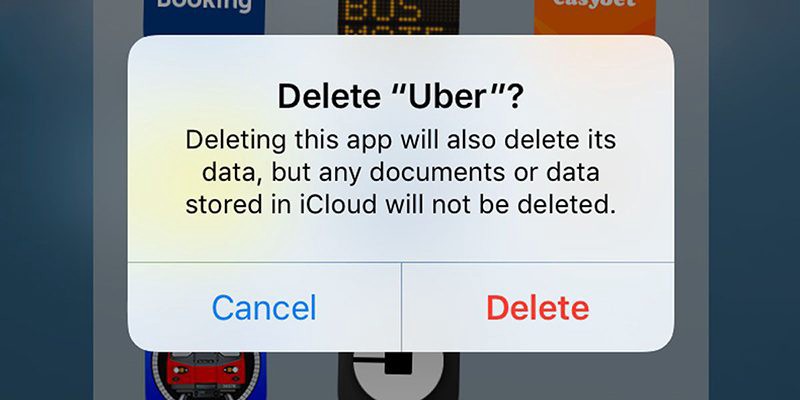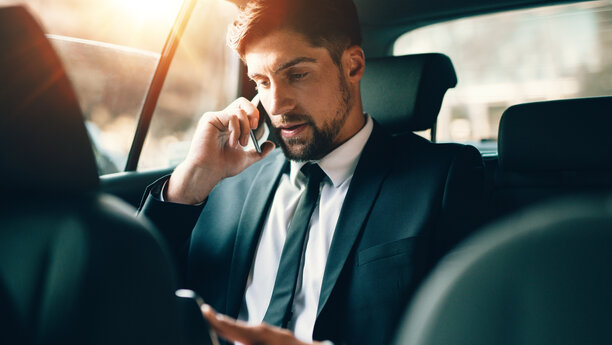By Paris Marx The tradeoffs are far too high for a little more convenience.
Over the past ten years, Uber has grown to become a ubiquitous provider of urban transportation. The company has become so popular that some people haven even started using it as a verb.
“Did you drive?”
“No, I ubered.”
Uber has made getting from A to B easier for a certain group of people — of that there can be no doubt — but it’s also had severe consequences for other people who don’t have the resources to be frequent uberers. And, personally, I think that should be considered when we decide which service or transportation mode we want to use to get to our destination.
As the headline says, I don’t use Uber. I’ve only been in an Uber vehicle once. I was coming home from a night out with friends in London and one of them requested a ride. When the driver arrived, I thought it would be rude to object, given how he was already there and expecting a fare.
I’ve never downloaded the Uber app, or signed up for an Uber account. I get annoyed when I see the logo on the windshields of cars, and I can’t say my reaction is much different when it’s Lyft instead — their PR may make them out to be the anti-Uber, but their business model is nearly identical.
I think we’d all be better off if everyone deleted the app and looked for alternatives. And though I’m talking about Uber, it’s really more of a shorthand for all ride-hailing services.
It’s time to give them up. Here’s why.
1. Uber is bad for workers.
Most people should know this by now, but Uber’s drivers are not employees, they’re contractors, and that comes with a lot of consequences.
Uber and other gig economy companies are frequently pitched as offering freedom from traditional employment, allowing workers to set their own schedules and be their own bosses. But that’s not how it works in practice. Sure, drivers can open the app whenever they want, but riders are only requesting rides at particular times, and if drivers ignore those peak periods, the time between rides will be longer and they’ll earn less money.
Since drivers are contractors, they also lose all the benefits of an employment contract. Uber drivers have no minimum wage, no vacation pay, no overtime pay, no health benefits, and none of the workplace protections that employees can expect. Their “job” is completely controlled by the platform company and they have no power to negotiate better conditions.
Uber’s success has also inspired a whole range of other “Uber-for-X” companies using a similar gig-work, contractor-reliant model, which pushes down wages and working conditions in a whole range of industries. As
recently put it in The Atlantic, “they’ve served to make our lives marginally more convenient than they were before,” but “the societal tradeoff, when fully calculated, seems as likely to fall in the red as the black.”
And it’s not just the workers who are suffering.
2. Uber is bad for cities.
Uber claimed it would liberate people from their cars and reduce congestion in the process, but it’s done nothing of the sort. Since Uber vehicle numbers are not capped in the way that taxis numbers are, ride-hail drivers have flooded city centers across the world, making all traffic slower and any road-based transport more frustrating as a result.
A study of seven major U.S. metro areas from UC Davis showed that 91 percent of ride-hailing users didn’t make any changes to their car ownership status, and those that did made up for the reduced miles driven by taking more ride-hail trips. The researchers also found that 49 to 61 percent of all ride-hailing trips wouldn’t have been taken or would have used transit, cycling, or walking had ride-hailing not been an option. Another study by the Metropolitan Area Planning Council put that number at 59 percent in Boston.
Those are key figures because they show that Uber, Lyft, and their competitors not only add car trips in urban centers, they also make existing trips less efficient by shifting them from transit or cycling into a car. This process makes traffic congestion worse because it places more vehicles on the road.
That’s exactly what has been observed in San Francisco and New York City. The San Francisco Country Transportation Authority estimated that ride-hailing companies added 5,700 vehicles to city streets during weekday peak hours, increasing to 6,500 on Fridays, and that there were fifteen times more ride-hailing vehicles than taxis. That translated to 170,000 additional daily trips and 570,000 additional vehicle miles, and the trips were concentrated in the densest and most transit-oriented areas of the city. Schaller Consulting’s report on New York City similarly found that the number of taxi and ride-hailing vehicles had risen 59 percent from 2013 to 2017 — remember taxi numbers are capped — adding over 600 million vehicle miles, which made congestion worse and, by extension, bus services less reliable.
These studies illustrate how Uber is making urban transportation worse for the majority of people in order to make it a bit more convenient for a much smaller group of people — surveys have consistently found ride-hailing users to be more highly educated, whiter, younger, and having higher incomes than the general public. Uber has also claimed it connects people to transit, but a report from the University of Kentucky released in January 2019 found that ride-hailing services reduced rail ridership by 1.29 percent and bus ridership by 1.7 percent annually, meaning that in San Francisco they’re responsible for a 12.7 percent decline in bus use. That’s terrible for our cities, for less well-off urban residents, and for anyone who wants efficient transportation networks.
Are there exceptions?
Between the negative effects on workers and cities, all to make mobility a bit easier for a small privileged group, I do not believe that Uber — or any other ride-hailing service — is providing a net benefit in urban areas. Uber makes wages, working conditions, and mobility worse for the many just to grant convenience and savings to the few — and that’s not something to support.
Where cities have tried to get ride-hailing under control, like in New York City, Uber has challenged the new regulations. Its new business strategy amounts to an attempted monopolization of urban trip-planning that would give it even more power that it has so far used against the public interest.
There is an argument that ride-hailing could work in less densely populated areas, such as suburbs or even rural areas, but those are currently the places where Uber is less likely to operate. As the SFCTA report noted, the vast majority of Uber’s trips take place in the densest parts of the city, where its negative effects are amplified. If drivers are already struggling to make a living in urban cores, imagine how impoverished they’d be in places with far fewer users. It’s just better to have a small taxi service.
I’m a bit more sympathetic to the safety argument, particularly coming from women who like to have the security of their location always being known and able to be broadcast to a friend or partner while they’re in an Uber vehicle. There’s a perception that taxis and transit won’t always be as safe for women, and rather than ceding safety to Uber, that should place pressure on taxi and transit operators to make services safer for everyone.
Though it’s worth noting that where some feel safer in Uber, others are discriminated against. Ride-hailing companies have been severely criticized for their lack of wheelchair-accessible services, and drivers have been known to refuse rides from or even attack black, gay, lesbian, and trans passengers. Uber has also been criticised for its lack of effective background checks which let thousands of criminals drive for the company and resulted in passengers being abused, sexually assaulted, and even raped. Instead of trying to improve its practices, Uber fought stronger background check rules as cities planned to legislate. So much for putting safety first.
In 2017, people took to social media to declare they would #DeleteUber and their followers should do the same. In the past two years, some of Uber’s messaging has changed and its business practices have arguably gotten a little better, but it’s still a company whose goals do not align with the public good. They’ve wreaked havoc on worker’s rights and city streets selling a false vision of the future of mobility. It’s time to put our efforts into improving transit and cycling, and making taxis safer for the rare time we need to hop in a car.
Uber doesn’t deserve our trust, nor our support. We can do better.
Related posts
RECENT POSTS
- 5 Tips to Help Choose the Right Airport Taxi Service June 21, 2022
- Dash and Sydney Airport (SYD) transfers June 15, 2022
- Enjoy the luxury of a chauffeur at Sydney Airport June 11, 2022
CATEGORIES
- Airport transfers (7)
- Chauffeur (18)
- Dash vs Uber Services (13)
- Job Offers (2)
- Limo Services (7)
- Our Blog (14)
- Sydney Accommodation (4)
- Taxi services (1)
- Uber (5)
- Uber Car Rent (14)
ABOUT
Dash has made itself well known in the transportation industry as one of the best car and action limousine service providers in Sydney. Our experience of more than a decade has earned the respect and trust of our clients. Besides that, satisfied clients have been our assets for the last ten years. Dash chauffeurs are among the best trained and most experienced professionals in the industry. Many have up to 15+ year tenures with our company.







Leave a Comment
You must be logged in to post a comment.